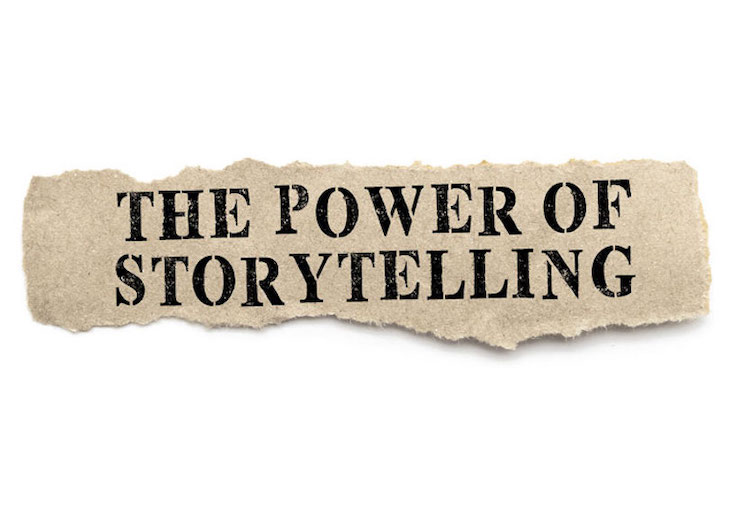Storytelling is an effective communication strategy. It has the power to engage, persuade, and motivate the listener. Human brains are wired to love stories, and for that reason, stories are much easier to remember than facts. Service Members can benefit from learning how to tell compelling stories and apply this skill to improve many aspects of military life.
The neuroscience of storytelling
Storytelling engages multiple brain systems, including those involved in attention, memory, language, emotion, and social interaction.
Brain fact: When you hear or read a story, your brain actively works to construct a mental representation of the events and characters, and to make sense of the narrative structure.
Benefits: Storytelling can boost memory and help your audience see how concepts apply to real-world situations.
Brain fact: When you tell an impactful story, functions in your listener's body—such as brain activity and heart rate—synchronize with yours. Synchronized brain activity appears in brain regions responsible for how you hear sounds and words (auditory stimulus processing) and language comprehension. It also appears in the brain area that enables meaning-making (how you make sense of life events and new information and connect them to your goals and values). The strength of both synchronizations—brain activity and heart rate—predicts how well the listener remembers your story.
Benefits: Powerful stories can act as a mental rep for audience members and create a connection between the speaker and the audience.
Brain fact: Groups of listeners also show synchronized heart rate fluctuations with one another when listening to an impactful story.
Benefits: Storytelling can help build cohesion among listeners and creates a common experience that can bring your group together.
Brain fact: Stories can activate the default mode network (DMN), a brain network associated with meaning-making. DMN is also responsible for constructing a mental imagery of the narrative, connecting with past memories, assessing one's own emotions, and “guessing” what others are feeling.
Benefits: Storytelling can help your audience engage in deep reflection on how the message applies to past experiences, current interests, important relationships, and future goals. In addition, it helps others see the world from another person’s perspective, building empathy.
Brain fact: Stories can elicit emotions, and feelings inspire action.
Benefits: Stories can help motivate audiences to make meaningful changes. The emotions associated with listening to someone's story are more effective in influencing change than hard data (facts) on the same reality.
So, how do you tell a compelling story? Here are some ways to use this skill to improve communication, relationships, team cohesion, and leadership.
Make an impact
Simply telling a story doesn’t mean you’ll accomplish the benefits listed above. It’s a best practice to make sure that your story is well thought out in its design and delivery.
- Identify the story's goal. Before you start writing, it's important to be clear about the specific impact you want your story to have. This will help you to focus your message and create a more targeted narrative. The first question you should answer is, “By the end of my story, I want my audience to…” The rest of the elements of your story should be solely focused on achieving this goal.
- Use relatable characters. To effectively engage your audience, it's important to create characters that they can relate to their own lives and empathize with. By using relatable characters, you can help audience members see themselves in the story and feel more connected to the message. If you’re telling a personal story, try to put yourself in the audience's shoes. Reflect on which details could help them relate to you, and which ones might turn them off.
- Create a compelling narrative. A thoughtful narrative structure can help keep your audience engaged and achieve your targeted goal. A story that lacks coherence or structure might be hard for listeners to follow or understand, which can make it ineffective. Make sure your story has a clear beginning, middle, and end.
- Beginning. Paint a picture for your listeners so that they can see themselves in the story and relate to the characters. Do the details feel authentic? When possible, build on common experiences that your audience can easily place themselves into.
- Middle. Make sure something noteworthy happens! Use elements such as conflict, resolution, and surprise to create a compelling story. If you’re hoping audience members might experience some type of change, have your main character’s narrative model the change you hope to see in them.
- End. Provide a clear call to action or lesson that accomplishes your goal. Think of a memorable short saying or motto that your audience can remember in the future.
- Beginning. Paint a picture for your listeners so that they can see themselves in the story and relate to the characters. Do the details feel authentic? When possible, build on common experiences that your audience can easily place themselves into.
- Be intentional with details. Be strategic about word choice, situations, and other information you include in your story. Make sure to eliminate any unnecessary details that can distract from your message or cause your audience to lose interest. Also, try to bring up common situations or relatable cues that you hope will persuade your audience to apply your targeted goal. For instance, if your goal is to teach how to use the stress response as an asset when doing combatives, use that as an example.
- Consider which emotions you want your audience to experience. Emotions can be a powerful motivator. Identify the goal of your story and those emotions you want your audience to feel to meet your goal. Also, be strategic about which emotions you are feeling and showing throughout your story. Emotions can be contagious, so if you’re feeling motivated or sad, it will help your audience feel those emotions.
- Practice and get feedback! A carefully crafted story won’t get the results you’re hoping for if it’s poorly delivered. Rehearse often, ask for feedback, and focus on your presentation.
- Tone. Monotone or unenthusiastic speaking will often lose your audience. Be strategic about the tone of your voice, shifts in volume, energy, and emotion to grab your audience's attention and drive your point home.
- Structure. Stories that are hard to follow, seem too long, or don’t flow easily can bore your listeners—or lose them entirely.
- Takeaway. Entertaining and engaging stories often might grab your audience members’ attention, but if they’re not walking away with a clear message, it’s not effective.
- Tone. Monotone or unenthusiastic speaking will often lose your audience. Be strategic about the tone of your voice, shifts in volume, energy, and emotion to grab your audience's attention and drive your point home.
Apply the skill of storytelling
It takes knowledge, creativity, and strong interpersonal skills to successfully tell your story and engage your audience.
- Communicate the mission and values to fellow teammates and the public. Storytelling is a valuable tool to share stories about the history and traditions of the military, as well as the heroism and sacrifice of individual Service Members.
- Facilitate training and development for new recruits and experienced Service Members. Storytelling includes sharing stories about real-life situations and challenges that Service Members might encounter in the field, as well as stories about the skills and capabilities that are needed to succeed in military operations.
- Promote relationships, teamwork, and cohesion. There’s a unique opportunity for listeners to experience the same emotions as the storyteller. And emotions inspire action. Trust emerges from stories highlighting the importance of each team member and how teamwork leads to your unit's success. Personal stories elicit empathy, empowering the listener to see the world from the teller's perspective. Together, trust and empathy give members of the unit a sense of community and belonging.
- Build morale and resilience. Storytelling can be particularly effective during times of high stress or adversity. This includes sharing stories about the bravery and resilience of those who served in the past, as well as stories about the support and resources that are available to help Service Members cope with difficult situations.
Ethical use of storytelling
Storytelling is highly effective at engaging and persuading people. For this reason, it’s sometimes used to spread misinformation and trap people into conspiracy theories. Send an accurate message when you’re telling a story, and remember that your goals should always align with the values and mission of the military. When used right, storytelling has the power to improve your communication skills and relationships among teammates and those you lead.





